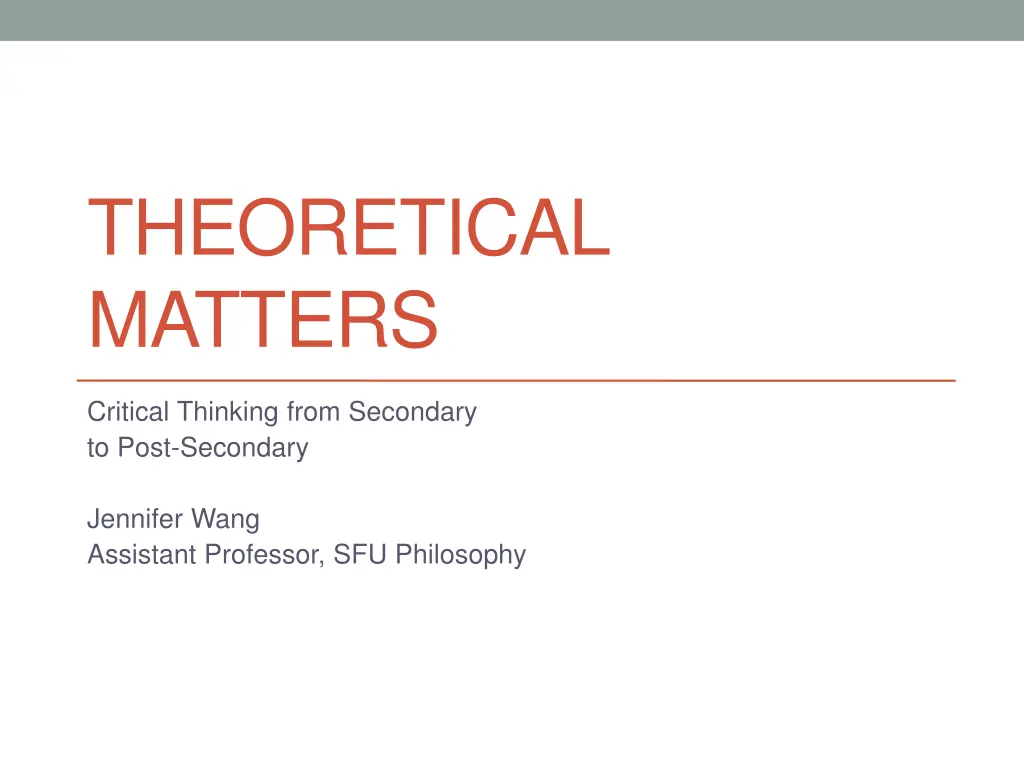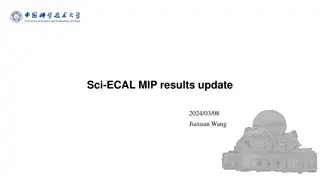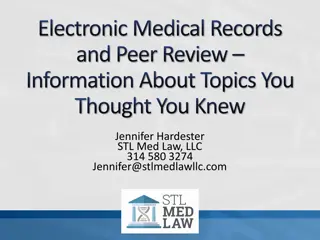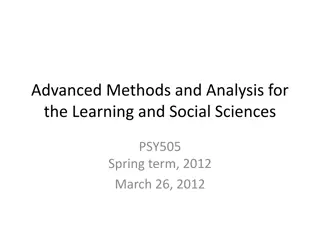
Enhancing Critical Thinking Skills in Post-Secondary Education
Explore how Critical Thinking is taught in post-secondary philosophy courses, focusing on argument analysis, reasoning tools, and essential topics like logic and cognitive biases. Learn how to evaluate arguments and apply rational thinking to various subject matters.
Download Presentation

Please find below an Image/Link to download the presentation.
The content on the website is provided AS IS for your information and personal use only. It may not be sold, licensed, or shared on other websites without obtaining consent from the author. If you encounter any issues during the download, it is possible that the publisher has removed the file from their server.
You are allowed to download the files provided on this website for personal or commercial use, subject to the condition that they are used lawfully. All files are the property of their respective owners.
The content on the website is provided AS IS for your information and personal use only. It may not be sold, licensed, or shared on other websites without obtaining consent from the author.
E N D
Presentation Transcript
THEORETICAL MATTERS Critical Thinking from Secondary to Post-Secondary Jennifer Wang Assistant Professor, SFU Philosophy
2 Theoretical Matters | Jenn Wang Introduction I teach PHIL105: Critical Thinking at SFU. My goal in this presentation is to give you a sense of how Critical Thinking is taught as a philosophy course at the post-secondary level.
3 Theoretical Matters | Jenn Wang Critical Thinking in Philosophy I think of Critical Thinking as a set of reasoning tools that can be applied to different subject matters.
4 Theoretical Matters | Jenn Wang Critical Thinking in Philosophy The central focus is argument analysis. Two main goals of teaching argument analysis: Get students to evaluate arguments rather than views Teach them how to break down arguments into steps that can be evaluated separately Arguments have premises and a conclusion. In a good argument, the premises will be true, and the premises will provide rational support for the conclusion.
5 Theoretical Matters | Jenn Wang An Argument I have recently spoken to many young people who have told me that they do not intend to vote in the upcoming election. This displays flagrant disregard for basic moral norms. It is now established that there is a positive correlation between the voter turnout in a country and the quality of government in that country. It follows that low voter turnout causes poor government. Everyone who is eligible to vote has a duty to do so. I hope that this is soon more widely recognized.
6 Theoretical Matters | Jenn Wang An Argument There is a positive correlation between the voter turnout in a country and the quality of government in that country. Low voter turnout causes poor government. Everyone who is eligible to vote has a duty to do so.
7 Theoretical Matters | Jenn Wang Topics in Critical Thinking While argument analysis is the central focus, I also teach students specific reasoning tools, including: Logic Probability Decision theory Statistical reasoning Other topics that could be taught in a Critical Thinking course include: Cognitive Biases Common fallacies Categorical syllogisms Venn diagrams
8 Theoretical Matters | Jenn Wang Example: The Base Rate Fallacy A doctor has a testing kit, which she can use to test patients for the presence of a certain virus. The test result is always either positive, or negative. If a patient who has the virus is tested, there is a 90% chance that the test will be positive. If a patient who does not have the virus is tested, there is a 90% chance that the test will be negative. It is known that 1% of people in Vancouver have the virus. A person is selected at random from the population of Vancouver, and given the test. It is positive. What is the probability that the person has the virus? Answer: There is an 8.3% chance that the person has the virus.
9 Theoretical Matters | Jenn Wang Example: The Base Rate Fallacy Suppose that we test 1,000 randomly chosen people. About 10 of them will have the virus. From the 10 people who have the virus, we ll get about 9 positive results. From the 990 people who don t have the virus, we ll get about 99 positive results. Notice that most people whose test is positive don t have the disease!
10 Theoretical Matters | Jenn Wang Wireless Philosophy / Khan Academy http://www.wi-phi.com/






















